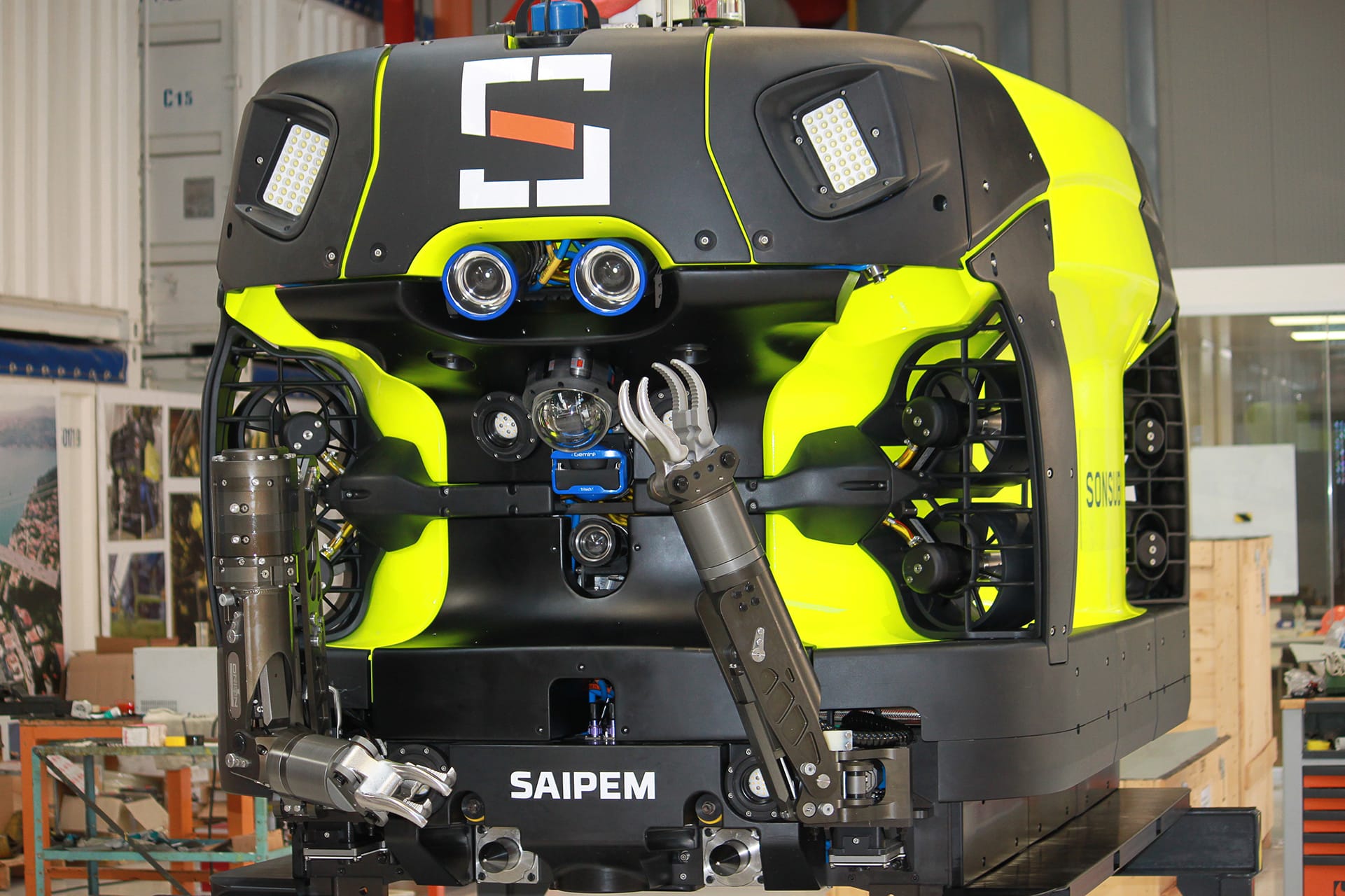The project
We signed a subsea service contract with Equinor that provides for the use of the Hydrone-R Underwater Intervention Drone (UID) developed by Saipem, and the electric Hydrone-W Work Class ROV in the Njord Field.
It is a 10-year contract, which may be extended for an additional 10 years. It calls for providing ROV and UID services to support drilling operations, as well as a complete plan for inspections and interventions on Njord Field subsea structures (such as pipeline end manifolds (PLEM), flow lines, umbilicals and riser bases, etc.).
The Hydrone-R and Hydrone-W will be controlled from both the Njord-A rig and from an onshore control station using Sonsub's proprietary remote control technology.
Key facts and figures
Project impact
The project is a major step forward in subsea technology.
The use of resident underwater drones will bring advantages in terms of service costs and efficiency (more frequent inspections and maintenance), but also for the reduced environmental impact, as there is no need to send support vessels or personnel by helicopter to remote locations.
This approach represents a paradigm shift in subsea inspections and interventions: being able to provide low-cost inspections with a resident Hydrone enables the digital transformation of subsea fields: large volumes of data can be collected in order to monitor any changes in subsea structures, making it possible to carry out predictive maintenance and preventive interventions.
An extraordinary project
This is the first service contract worldwide for the supply of underwater drones in the offshore Oil & Gas industry, in which Hydrone-based technology plays a pioneering role.
The Hydrone program is carried out entirely by SONSUB, Saipem’s centre of excellence for Life of Field, Underwater Technology and Subsea Processing within the Offshore E&C Division ‘Solutions’ Business Line, is a key element of Saipem’s technological development plan for subsea robotics.
Launched in 2015, our visionary Hydrone program is the culmination of years of hard work and is a perfect example of Saipem’s commitment to technological innovation, constantly seeking solutions that intelligently combine HSE excellence, industry needs, innovation and operational efficiency.
All Njord project operations will be remotely controlled from an onshore control room, thus allowing a smaller offshore crew, a reduced CO2 footprint, and fewer offshore transfers, ultimately improving safety.

Technological challenges
To realise this project we had to face some complex and stimulating challenges.
The main ones we worked on were these:
-
Advanced remote control
-
Long-term subsea residency (reliability)
-
Subsea wireless communication
-
Subsea battery charging
-
AI-based navigation and inspections based on feature recognition
Assets and people
The project involves SONSUB, Saipem’s centre of excellence for Life of Field, Underwater Technology and Subsea Processing within the E&C Offshore Division ‘Solutions’ Business Line, and uses the new Hydrone platform (watch the video) consisting of a hybrid vehicle (ROV/AUV) resident on the sea floor (Hydrone-R) and an electric resident ROV system specifically designed for remote operation (Hydrone-W).
The Hydrone-R: a drone with both ROV (Remotely Operated Vehicle) and AUV (Autonomous Underwater Vehicle) capabilities, designed to be controlled remotely from the ground (like an ROV) and that can perform autonomous inspections (like an AUV).
The vehicle can operate in a subsea environment for more than a year at a depth of 3000 m, to carry out small operations and autonomous inspections. It has a range of over 10 km and the battery pack provides 12 hours of operation when fully charged.
Hydrone-W: an Electric Work Class ROV designed to operate in traditional ROV mode or as a subsea resident device tethered to a subsea or surface base and controlled from a remote station. The Hydrone-W can also perform various tasks to support subsea construction operations.